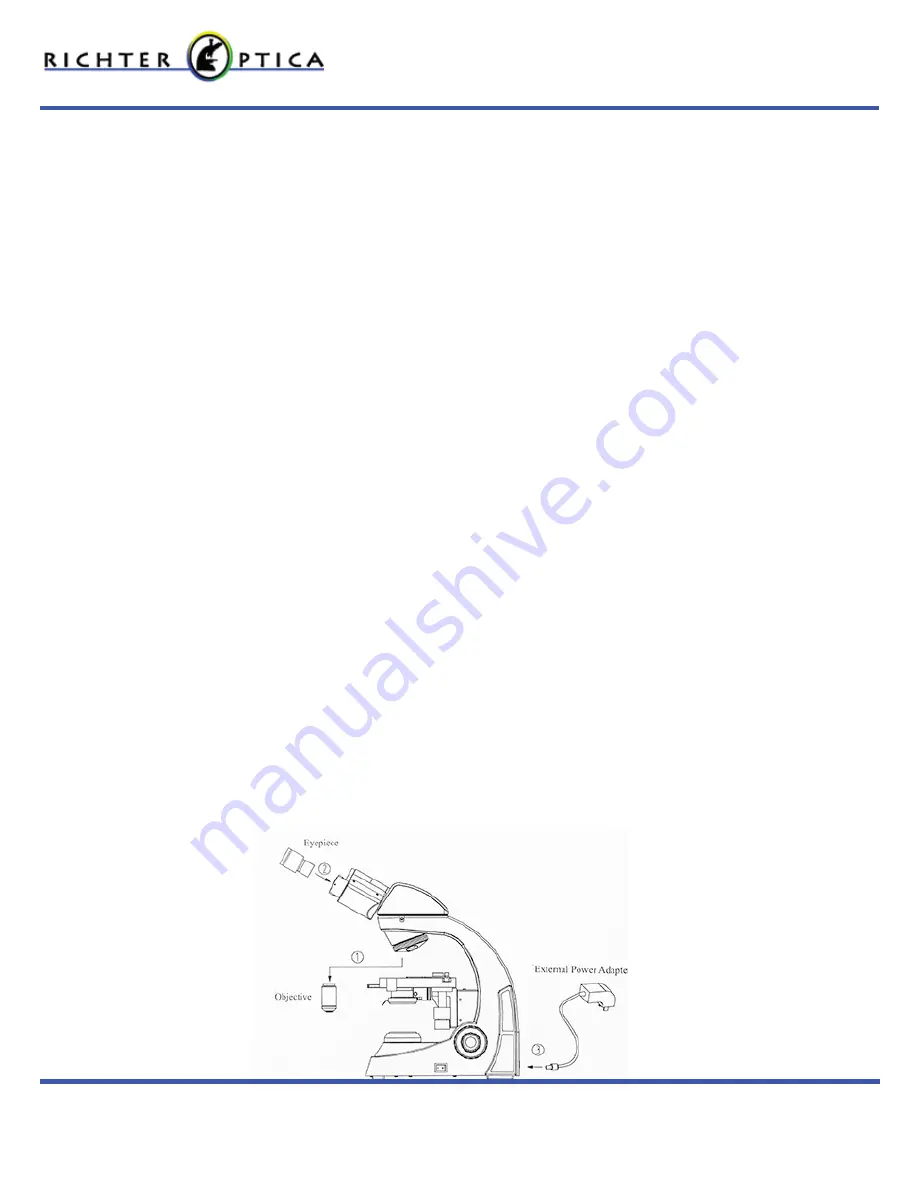
1
Thank you for your purchase of a Richter Optica microscope. The information in this manual is provided to answer most
questions that can arise when operating your microscope and to help you avoid unneccesary maintenance expenses in
the future.
Please carefully read instructions before operating microscope. Nomenclature used to describe components and
controls are identified on opposite page.
UNPACKING
Do not discard styrofoam container or packing materials until you are sure shipment is complete and
undamaged (retain styrofoam shipping container to store your microscope when it is not in use). Remove all tape and
packing material used to protect microscope during shipment. Make certain lens surfaces do not come in contact with
dirt, fingerprints or oil. Damage of lens surfaces occur when they come in contact with such contaminants, and image
quality is reduced.
BEFORE USE
When moving the microscope, use both hands and only lay on flat, even surfaces. Damage will occur by holding the
stage, focussing knobs or head when moving the microscope.
For safety, make sure the power switch is always turned to the off position “O” before replacing the bulb or fuse and
wait until both the bulb and bulb holder have cooled down.
Replacement bulb: Single 3w LED bulb.
SETTING UP THE INSTRUMENT
Avoid placing the instrument in locations exposed to direct sunlight, dust, vibration, high humidity and where it is
difficult to unplug the power supply cord.
MAINTENANCE
1. Wipe lenses only with lens paper.
2. Never disassemble the microscope, disasembling the microscope will affect the performace of the
microscope and void any warranty.
3. Cover microscope with dust cover provided after every use.




























